.avif)

Drain Fly Removal in Diboll, TX
Drain fly removal in Diboll, TX by Spot On Pest Control, LLC uses sanitation, enzymes, & mechanical cleaning for long-term results. Schedule your inspection.

Drain Fly Removal in Diboll, TX
Drain fly infestations in Diboll, TX are common in warm, humid environments and usually signal an underlying plumbing or sanitation issue rather than a simple seasonal nuisance. If you are seeing tiny moth-like flies around sinks, showers, floor drains, or near septic outlets, quick, targeted action can remove the adults and, more importantly, eliminate the breeding source so they do not return.
What drain flies look like and where they breed
- Appearance: small (1.5 to 5 mm), fuzzy wings, slow, short flights; often called moth flies or sewer gnats.
- Typical indoor breeding sites in Diboll homes: kitchen and bathroom drains, shower/tub traps, floor drains in laundry areas, garbage disposals, and sink overflow channels.
- Outdoor or septic sources: broken sewer lines, septic tank scum layers, or standing water with organic film near foundations or gutters can also harbor breeding populations.
.avif)
Common drain fly issues in Diboll, TX
- Persistent sightings after basic cleaning: indicates biofilm deeper in the trap or pipe.
- Bad smells from drains: a sign of organic buildup where larvae feed.
- Recurring infestations tied to humidity or seasonal rains: high humidity in East Texas magnifies biofilm persistence and breeding.
- Infestations linked to septic systems or yard drainage: rural properties with septic tanks or poor yard drainage may see flies originating outside the home.
Root-cause diagnosis: what to inspect
A targeted inspection focuses on removing the breeding habitat, not just the adult flies.
- Visual check: look for adults around suspect drains and areas that remain damp.
- Larval detection: remove drain covers and inspect with a flashlight for grayish larvae or a slimy adhesive film on pipe walls.
- Trap and seal check: ensure P-traps contain water and that pop-ups/overflow channels are free from trapped organic material.
- Plumbing camera or plumbing inspection: recommended for recurring problems to identify broken pipes, biofilm deep in lines, or connections to contaminated outdoor sources.
- Septic system assessment: older or malfunctioning septic systems can create persistent breeding sites; check for scum layers or backups.
Effective removal and treatment options
Removing drain flies requires eliminating the breeding film and any standing organic water. Steps typically include a mix of mechanical, biological, and sanitation measures.
Mechanical cleaning
- Remove strainers, pop-up stoppers, and clean visible buildup.
- Use a drain snake or auger to remove hair and biofilm clogs up to several feet into the pipe.
- For severe buildup, professional hydro-jetting flushes high-pressure water through pipes to remove biofilm, roots, and scale.
Enzyme and bacterial treatments
- Apply enzyme-based drain cleaners that contain bacteria or enzymes designed to digest organic biofilm. These are effective at breaking down the larvae food source without harsh chemicals.
- Important application notes: follow label dwell times, keep drain water non-acidic during treatment, and use repeated applications over several weeks for persistent infestations.
- Avoid mixing enzyme treatments with caustic chemical cleaners; enzymes need a biological environment to work.
Sanitation and targeted fixes
- Clean sink overflow channels, shower gaskets, and garbage disposal cavities where organic film hides.
- Eliminate standing water around the home: check AC drip pans, floor drains, mop buckets, and outdoor low spots.
- Repair plumbing issues that allow standing water or force sewage to backflow: broken traps, misaligned vents, or leaking sewer lines.
- For homes with septic systems: schedule maintenance and pumping as needed; repair failing baffles and lids that allow flies access.
Step-by-step treatment process
- Identify the active drains by observing flight patterns and using a simple trap test (a jar with soapy water placed beneath a drain at night).
- Mechanically clean visible traps, strainers, and drain openings.
- Use a drain auger or hydro-jetting to remove deep biofilm if mechanical cleaning is insufficient.
- Apply enzyme-based cleaners according to manufacturer instructions and repeat weekly until no activity is observed.
- Correct plumbing defects (replace dry traps, reseal fixtures, repair vents, or fix leaking sewer lines).
- Reinspect after 48 to 72 hours and again at two weeks to confirm elimination.
Preventing recurrence in Diboll homes
- Maintain drain hygiene: run hot water briefly after each use, and use enzyme maintenance tablets weekly for drains prone to buildup.
- Keep P-traps filled: infrequently used drains can dry out and allow gas and flies to enter—pour water or mineral oil into those drains periodically.
- Address humidity and standing water: improve ventilation in bathrooms, empty mop buckets, and keep AC drip pans clean.
- Schedule regular plumbing checks: yearly inspections catch failing traps, venting problems, and early septic issues before they become breeding grounds.
- Watch outdoor drainage: clear gutters and grade soil away from foundation to avoid pooled organic water that can attract flies.
Why prompt action matters
Drain flies are more than just a nuisance. Persistent infestations indicate organic buildup or plumbing failures that can worsen over time, causing odors, reduced drain performance, and potential hygiene concerns. In Diboll’s warm, humid climate, biofilm forms and persists faster, so addressing the root cause quickly prevents repeated treatments and more costly plumbing repairs later.
Follow-up and monitoring
After treatment, plan to monitor problem drains for at least two weeks. If adults reappear or specific drains show recurring larvae, a deeper plumbing inspection with a camera is often the most reliable way to find hidden biofilm, pipe defects, or outside connections. Regular maintenance cleaning and enzyme use are effective long-term strategies to keep drain flies from returning in Diboll homes.
Removing drain flies permanently is about targeting the environment that allows them to breed. With accurate diagnosis, a mix of mechanical cleaning, enzyme treatments, sanitation fixes, and plumbing repairs, you can eliminate infestations and reduce the risk of future outbreaks in Diboll, TX.
Expert Drain Fly Removal in Diboll, TX That Targets the Source
Tired of those pesky flies around your drains? Our professional drain fly removal in Diboll, TX goes beyond surface treatments to eliminate breeding grounds and prevent return. Spot On Pest Control, LLC combines proven techniques with custom maintenance options for lasting protection. Schedule your service today.
Get Rid Of Drain Flies With Deep-Cleaning Pest Control
Our Services
Our pest control services cover ants, termites, bed bugs, rodents, mosquitoes, and other common pests, with customized solutions for both residential and commercial properties.
.png)






